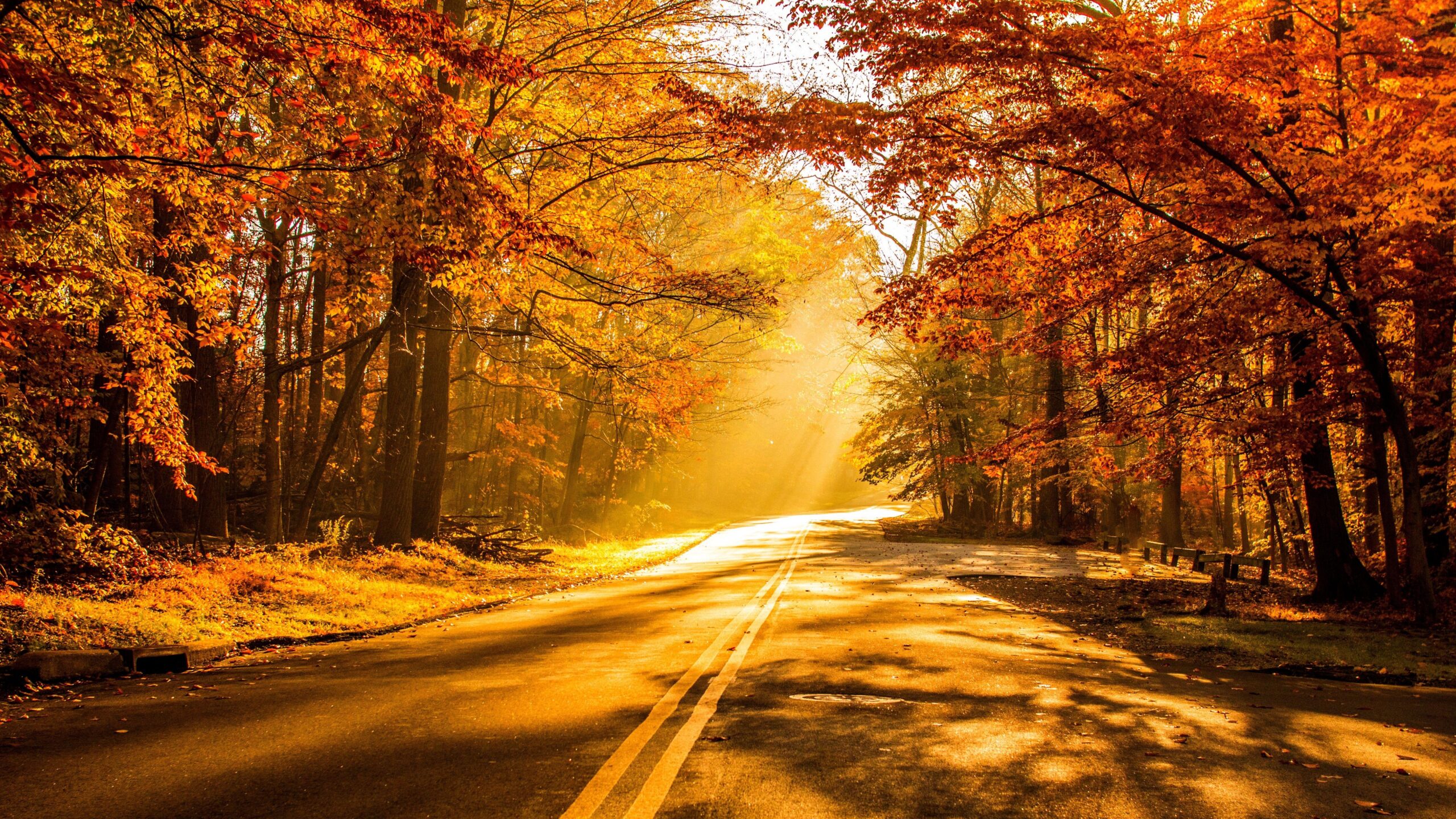
A ‘season of mists and mellow fruitfulness’ and ‘close bosom-friend of the maturing sun’, autumn is a repetitive subject in literature, symbolizing various themes such as transformation, maturity, and even falling-off. The vibrant colors of falling leaves, the crispness in the air, and the gentle descent into winter have inspired countless writers and poets across genres. In fiction, poetry, free verse, and haiku, autumn holds a lavish arras of emotion and meaning.
Poetry and the Cadence of Change
Romantic poet John Keats’ poem ‘To Autumn’ is perhaps one of the most celebrated odes to the season. Keats personifies autumn as a time of richness, serenity and fulfillment, capturing the fruitfulness of the harvest and the gentle decline towards winter. Keats’ depiction is sensorial, inviting readers to experience autumn through sight, sound, and smell. The opening lines beautifully set a tone of quietude and accomplishment:
Season of mists and mellow fruitfulness,
Close bosom-friend of the maturing sun;
Conspiring with him how to load and bless
With fruit the vines that round the thatch-eves run;
To bend with apples the moss’d cottage-trees,
And fill all fruit with ripeness to the core;
To swell the gourd, and plump the hazel shells
With a sweet kernel; to set budding more,
And still more, later flowers for the bees,
Until they think warm days will never cease,
For summer has o’er-brimm’d their clammy cells.
W. B. Yeats crafts poignant verses in ‘The Wild Swans at Coole,’ reflecting the change and impermanence of autumn. His poem muses on the passage of time, as exemplified by the swans: “But now they drift on the still water, / Mysterious, beautiful; / Among what rushes will they build, / By what lake’s edge or pool.”
Similarly, Robert Frost’s works frequently reflect on nature and the passage of time. In his poem ‘After Apple-Picking,’ autumn is a metaphor for the later stages of life. Frost’s contemplation on the end of the apple harvest parallels the waning years of a human life. His familiarity with rural settings and natural imagery allows readers to feel the weight of the season’s transition, embodying both accomplishment and fatigue. Frost says:
For I have had too much
Of apple-picking: I am overtired
Of the great harvest I myself desired.
There were ten thousand thousand fruit to touch,
Cherish in hand, lift down, and not let fall.
Robert Frost’s ‘Nothing Gold Can Stay’, William Wordsworth’s ‘The Prelude’, Walt Whitman’s ‘Leaves of Grass’ and Sylvia Plath’s ‘Ariel’, all these poems have a poignant reflection on autumn’s fleeting nature including the struggle for hope.
In free verse, autumn is often portrayed with a prominence of imagery and emotion, unhindered by rhyme or meter. The American poet Carl Sandburg’s ‘Under the Harvest Moon’ is an exquisite piece that captures the transient beauty of the season. The moon, symbolizing cycle and renewal, reflects on the ephemeral beauty of autumn and love intertwined with the natural order.
Mary Oliver’s ‘A Thousand Mornings’ includes reflections on autumn’s role in the natural cycle and human emotion. Her observations of the world blend with internal musings, translating the seasonal shift into personal contemplation. Oliver’s work often blurs the line between the exterior world and the interior landscape, making the serenity and chaos of autumn a metaphor for introspection and change.
Autumn’s Whispers in Fiction
In fiction, autumn often functions as a backdrop that reflects internal changes in characters or foreshadows significant events. In Albert Camus’ ‘The Stranger,’ autumn’s desolation mirrors the protagonist’s emotional state Thomas Hardy’s ‘Tess of the d’Urbervilles,’ autumn’s harshness reflects the protagonist’s tragic fate. Nathaniel Hawthorne’s ‘The Scarlet Letter’ uses autumn to symbolize Hester Prynne’s internal conflict and the puritanical pressures of her environment. The somber, fading leaves parallel Hester’s isolation and societal judgment, offering a compelling narrative tool to enhance the story’s themes.
F. Scott Fitzgerald’s ‘The Great Gatsby’ utilizes autumn to mirror the decay and moral ambiguity of the era. The autumn setting of the novel’s conclusion underscores the inevitable decline following the summer’s vibrancy and excess. As leaves fall and the days shorten, the characters face the shattering of illusions and dreams unfulfilled, capturing the essence of the Jazz Age’s disillusionment. One notable scene takes place in a New York apartment, where the protagonist observes the city’s transformation: “The street lamps gleamed overhead, and merry shouts floated from the Subway. The lights grew brighter as the earth lurches away from the sun and now the orchestra is playing yellow cocktail music.”
Haiku: The Elegant Simplicity of Nature’s Transition
The haiku, a traditional form of Japanese poetry, a short poem often focuses on nature and the seasons. The brevity of haikus requires concise imagery and emotion, capturing the essence of a moment. Matsuo Bashō, one of the greatest haiku masters from Japan’s Edo period, encapsulates autumn’s spirit with his evocative and spare verses. In his haiku about the ‘first autumn morning,’ Bashō writes:
on the mountain path,
the autumn wind blows heavy—
heads of pampas grass.
This haiku paints a vivid picture of the autumn wind’s presence, suggesting both strength and gentleness. Haikus like these distill nature into its simplest form, offering a moment of clarity and reflection in the fleeting nature of this seasons, such as: “first autumn morning: / the mirror I stare into / shows my father’s face” and
in the cicada’s cry
no sign can foretell
summer’s end
Matsuo Bashō’s ‘furuike ya’ captures autumn’s serenity, while Yosa Buson’s ‘aki no kure’ contemplates autumn’s twilight, a time for introspection. Masaoka Shiki’s ‘kaze to ki no’ celebrates autumn’s vibrant colors, inviting the reader to carouse in the season’s splendor.
Cultural Reflections
The portrayal of autumn in literature transcends geographical and cultural boundaries, yet it remains deeply personal. Autumn allows writers to explore themes of loss, nostalgia, and the passage of time. It is a season that evokes both the happiness of harvest and the inevitability of decline, making it a versatile symbol in literature.
Many cultures celebrate autumn festivals, thanking nature for its bounty, while simultaneously preparing for the scarcity of winter. This duality of celebration and anticipation is effectively mirrored in literature. Writers use autumn as a metaphor for human experiences—youth giving way to age, dreams transitioning to reality, and beauty fading into memory.
Hence autumn is traditionally known as a time to celebrate the harvesting of crops including squash, pumpkins, grapes, cranberries, and apples, people celebrates after picking their own produce with friends and family across the countries.
Biggest festivals of India including ‘Ganesh Chaturthi’, ‘Navratri’, ‘Dussehra’ and ‘Diwali, all are celebrated in the months of autumn. Mid-Autumn Festival or Mooncake Festival, is a harvest festival celebrated in Chinese culture in autumn season.
Autumn at the Arboretum in Dallas, The Great Jack O’Lantern Blaze in Hudson Valley, New York, National Apple Harvest Festival in Biglerville, Pennsylvania, Sever’s Fall Festival in Shakopee, Minnesota, Salem Haunted Happenings in Salem, Massachusetts, Santa Fe Wine & Chile Fiesta in Santa Fe, New Mexico etc. are few of the festivals celebrated in United States of America in autumn season.
The Continued Resonance of Autumn
From John Keats’ lyrical reflection in ‘To Autumn,’ to F. Scott Fitzgerald’s vivid descriptions in ‘The Great Gatsby,’ autumn in literature, with its vibrant hues and melancholic whispers from the warmth of golden light to the chill of fading life, serves as a canvas for reflection, a metaphor for life’s transitions, and a celebration of nature’s rhythm.
Contemporary writers also continue to explore the many dimensions of autumn, finding new ways to express its timeless themes. This ongoing engagement highlights the season’s enduring appeal as a literary touchstone. Thus, autumn remains a beloved subject for its ability to capture the essence of change and the passage of time, muffled with readers across generations.
Dr. Shalini Yadav is a Professor, Writer and Columnist hailing from Jaipur, Rajasthan.















